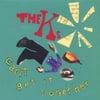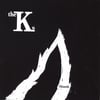 After the mistrial they killed and buried Richard – guilty as sin despite what the courts said – waist-deep in his front yard with his hand in his pockets, sunken-chested and hollow like a bathtub Madonna that someone had forgotten to fill with her Immaculate presence. The sheriff made a point of not patrolling the cul-de-sac where the birds and raccoons plucked at his drying flesh. Considering what he'd done there was no point – no justice, really – in tracking down his murderers. Two winters passed and there was just a mound in the yard with a stone-fruit sapling to mark the spot. Five years later the tree was heavy with its first crop.
After the mistrial they killed and buried Richard – guilty as sin despite what the courts said – waist-deep in his front yard with his hand in his pockets, sunken-chested and hollow like a bathtub Madonna that someone had forgotten to fill with her Immaculate presence. The sheriff made a point of not patrolling the cul-de-sac where the birds and raccoons plucked at his drying flesh. Considering what he'd done there was no point – no justice, really – in tracking down his murderers. Two winters passed and there was just a mound in the yard with a stone-fruit sapling to mark the spot. Five years later the tree was heavy with its first crop.Nice fruit from that tree, the neighbors said, but that was a lie. It was hard and took a long boil to get it ready for jars, and even then no amount of sugar and cinnamon bark would cut the underlying bitterness. But they put it up every autumn just the same, sending it off to distant relatives at the holidays.
The packages would be received, cards read, and solemn and empty vows would be made to reconnect with long-lost relatives in the new year. The jars would find their way to the back of pantry cupboards, then to the top shelves in back hall closets (next to dried cans of paint), and then into cellars or attics. Spring cleanings would push them into deeper corners. The death of the homeowner – usually an aged grandparent or a neglected spinster -- would find the jars abandoned in the rush to cart out what valuable furniture remained in the old house.
Eventually rooflines would sag, screen doors would fall off of their hinges, and roofs would finally put an end to the tumultuous relationships with their chimneys. Water would work the rafters and the houses would collapse in on themselves, pumpkins gone to rot. As the wood and linoleum went back to mulch the jars would finally fall and long-dried seals would let go. The poisoned seeds would spill out and wait for a dozen autumn's leaves to turn slick above them. Then they would push forth their white roots, grubbing upward and outward, following the buried contours of cracked foundations.
In no more than a hundred years a new tree would drop its rancid bounty in a clear spot in the forest that the deer would avoid.
--Steve Kilian





[...] Bad Fruit, Revisited [...]
ReplyDelete[...] Bad Fruit, Revisited Like this:LikeBe the first to like this post. [...]
ReplyDelete